Brad

Generally birth rates are declining in Europe, with the Nordic countries presently having the highest ones, save for France. Eastern European countries come at the bottom (together with Italy) and have birth rates that are considerably lower than in the Nordic countries and have been low now for over a decade by now. The balance between the birth rate and the death rate is determing in terms of the natural population growth of a country (immigration plays a part as well in the growth while emigration may under normal circumstance be negligible) While the overall population of the world is increasing, the UN states that Eastern European countries (for instance: Bulgaria, Latvia, Russia, and Ukraine) are likely to lose between one third to half of their population by the middle of this century.
When examining the decreasing of birth rates in some parts of the world it's interesting to have a look at what de facto need there is of children today. Way back when for example in a rural society families had to produce everything they needed in their living themselves. Women took care of the household, raising the children and taking care of the production of food and men went out to work to earn money and took care of the heavier chores. In a society where most of what you consumed had to be produced by yourself, the family had a greater significance than today. The more children the family had the more people there were helping out with the chores. A perceived importance of passing on the family genes through male figures of the family may also explain a higher birth rate than what is the case today in many parts of the world. Families might have given birth to numerous children in order to have a couple of sons. Sons were looked upon as needed to take care of parents when they grew older as daughters left home after marriage.
In another time, giving birth to biological children might have been unquestioned and seen as a natural and very integrated part of life, due for everyone. The concept of the family is more vague today and doesn't necessarily include man, wife and children as it has tradition-wise. There are alternative forms of living that don't necessarily fit with bringing up children. Also a pro-choice attitude is generally more common today. Abortions have become more available in places where it previously was not as accepted as for example in Eastern Europe.
Importantly there is also a significant link between aiding women in combining work life and family life and the birth rate. The aid in question include factors like equality between men and women in raising the children i.e. father's participation, possibilities for parental leave post-birth and and especially paternal leave, social welfare and the existence of state subsidized day care. If men are taking leave after the birth of a child, the women can return to work for part of that time. With state subsidized day care women can go back to working full time within reasonable amount of time and families can go on having two full incomes, why having children doesn't have to be an economic blow. It's said that only countries where women are provided good possibilites of combining work and family life, will see sustainable birth rates.
A large decline in birth rates in Eastern Europe could at least partly be explained by a relatively sudden change of more women so to speak leaving their homes to enter the labour force without having the same aid of Nordic women. Women in Eastern European countries are also becoming more educated on higher levels and as a rule the better educated women are the fewer children they bear. Higher level studies for these women also mean they will have children later in life which has impact on the number of children they will give birth to. On the one hand Nordic women are obviously
well-educated too but on the other hand they've generally also so far had better possibilities of both being working women as well as mothers.
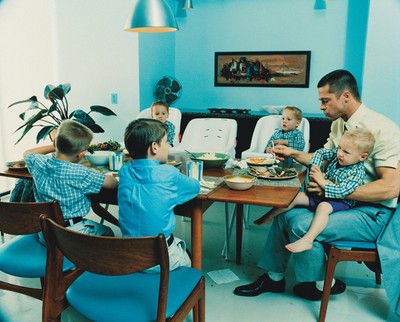
Photo: Steven Klein shooting Jolie and Pitt. The pair adopted 3 children and gave birth to 3 biological ones (not pictured here)
Patti
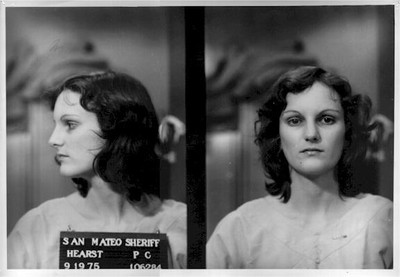
Remember the excessive medial coverage of a certain heiress being sent to jail for a few weeks the other year for a DUI (Drinking Under the Influence)? Well, the unfortunate fate of Ms Hotel Heiress fades in comparisation with that of heiress Patti Hearst. It's not difficult to picture that the Hearst saga must have created some serious headlines in the press and media waves worldwide in the 70's, of when it's dated.
Patti Hearst is the mother of model Lydia Hearst and heiress of newspaper publishing giant William Randolph Hearst (on whom the character of Charles Foster Kane in Orson Wells' Citizen Kane was supposedly based) and was in 1974 at the age of 19 captivated by gunpoint from her appartment for ransom money by members of the Symbionese Liberation Army (SLA). The SLA was a left-wing urban guerilla group that committed bank robberies and various acts of violence. The SLA orginially conditioned Hearst's realease by the release of jailed members of the group but later demanded the Hearst family to make a donation of $70 million worth of food to needy Californians. A small portion of the demand was met by the family which did not result in a subsequent release.
Later Patti Hearst announced on audiotape that she was no victim and had joined her captors in their aim "of freedom of all opressed people" and would be assuming the pseudonym "Tania". Patti Hearst a.k.a Tania participated in a robbery of a branch of the Hibernia Bank (founded by the family of her close friend Patricia Tobin) which wounded two people who were shot. The videotape from the surveillance system saw Hearst entering the bank with other members of the SLA holding a rifle and yelling: "I'm Tania. Up against the wall, motherfuckers!". The group fled only a few minutes later.
At one point the police surrounded a house where many of the SLA members were residing which led to a shoot-out ending in six of the members getting killed and the house burning down in flames (which could be seen live on TV) Hearst was arrested by the FBI 18 months after her kidnapping and when asked about her occupation she stated "Urban guerilla". Adding to an already sensational story and cashing-in on the insatiability of its readers TIME magazine even manipulated her mugshot before publishing it, making it look like Hearst had been beaten and was drugged at the time of her being caught. Her trial was called "the trial of the century" and she was sent to prison on the charges of armed bank robbery and use of a firearm while committing a felony.
After serving two years of jail time her sentence was commuted by President Jimmy Carter. Heart claimed she had been brainwashed by the group and also been victimized by rape and abuse. Hearst however initially refused to provide evidence against members of the SLA.. In his last official act of office President Bill Clinton granted Hearst a full pardon.

Angela

Carole Bouquet and Angela Molina
As a concept this is quite risqué and demanding on the viewer's part in terms of suspension of disbelief but mostly on any two actors taking on such a task as it will require for the character to still feel consist and will put pressure on both about their performances being no less than equal so that there is no outshining the other. Nonetheless, it would be fairly interesting to see more of these sort of dual performances on screen but there will likely not be much of that, at least not within mainstream cinema.
Bunuels' films are about respectable middle-class people trying to deal with giving in to their inner desires. In Cet obscur object du désir Rey's Mathieu falls in love and obsesses over much younger Conchita, trying to court and win her over but continously gets his love for her denied. Ultimately the film tells of man's human nature of desiring what cannot be obtained. The film begins randomly with Mathieu audaciously pooring a bucket of water from a train, over Conchita's head while she is trying to board the train, to the great curiousity of fellow passengers. From there the film continues with Mathieu in flasbacks giving an account of their story and what has led him to this little act that just played out.
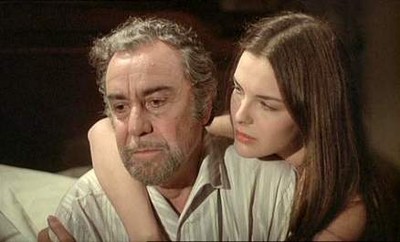
Leon
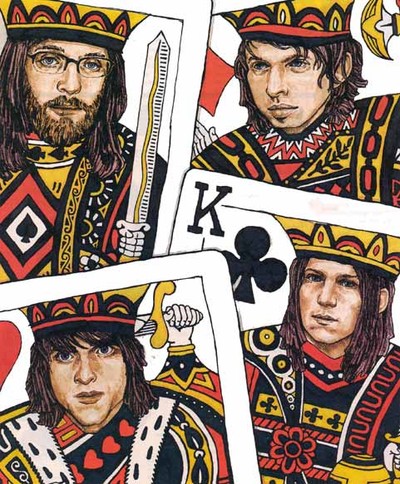
Oh and while at it, did I just miss the part where the Killers, seen in a tiny tent in 2004 with an audience of thirty people, went on to become a household name?
Max

Whether you'd want to remember him as the knight playing chess with Death in Ingmar Bergman's Seventh Seal or for any of his other great performances in the work of the late dirctor, as Father Lankester Merrin in The Exorcist , Karl Oskar in The Emigrants or like myself as Frederick in Woody Allen's Hannah and Her Sisters, Max Von Sydow remains one of the most succesful actors to emerge from Sweden. It's pleasing that even after reaching his eighties he is getting offered roles of substance. He was recently seen in Julian Schnabel's The Diving Bell and the Butterfly and will also appear in Martin Scorsese's upcoming film, Shutter Island alongside a long list of other illuminaries. Max von Sydow's having said he will continue making films as long as he is provided with worthwhile material, genuinely makes me hope producers of this world take good note. The man did age with plenty of grace, c'est clair.
He delivered some memorably witty lines in Hannah and Her Sisters:
You missed a very dull TV show on Auschwitz. More gruesome film clips, and more puzzled intellectuals declaring their mystification over the systematic murder of millions. The reason they can never answer the question "How could it possibly happen?" is that it's the wrong question. Given what people are, the question is "Why doesn't it happen more often?"
Mumrik

Tove Jansson's Snufkin or Nuuskamuikkunen as he is known in Finland is royally an appealing cat. He is effortlessly _______ .
Maurizio

Maurizio Cattelan is an contemporary Italian artist most kown for his controversial, yet humorous, art piece La Nona Ora (The Ninth Hour) depicting a scuplture of the Pope John Paul II being hit down by a meteorite from the sky. Other sculptures of his include, Par Peur de l'Amour (By Fear of Love), a sculpture of an elephant in a Ku Klux Klan uniform.
Cattelan is also known as a parasiting artist, who will use other people to execute his basic ideas and work. Cattelan himself will claim not to do too much during the process of an art piece and says about his effort: "It only takes a minute to have the idea." Cattelan's disinterest in journalists has also led to his on occasion sending other people to give interviews in his name claiming to be him.
Cattelan is also the co-creator of Permanent Food which could be described as a sort of meta-magazine consisting of pages of other magzines from all around the world (sometimes taken without permission and collected by a various number of people) resulting in a scrapbook feeling publication. It is a non-profitable project executed without offices by Cattelan and editing partner Domnique Gonzales-Forester. Additionly there is now also Permament Family, described as a photo album about photo albums with contributions made from family photo albums from near and far.
Recently I was lucky to catch one of Cattelan's installations with a friend while in Brussels at the contemporary Bozar (word play of Beaux arts) musuem. Not wanting to get infected by the descriptive words of the curator, I'm still trying to figure out what Cattelan's intentions were.
On his line of work Cattelan says: "Hunting for freedom, I've found the real prison. but at least it's a prison I've chosen for myself."
Tom
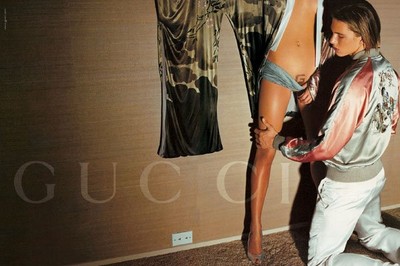
Is this ad sexist, mindlessly self-indulgent, degrading and objectifying? Is it just fun, original, clever and bold? How about, empowering for women? If this is an act of what it looks like, then who seems to be on the receiving end? Like is often the case with art, if you will, it all just depends on from which point of view one wishes to regard it. There are often several more reasonable perspectives than just one, although not always obvious for all.
While Testino shot this ad, it is still Terry Richardsson who shoots ads like these routinely.
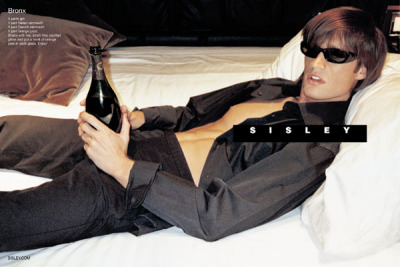
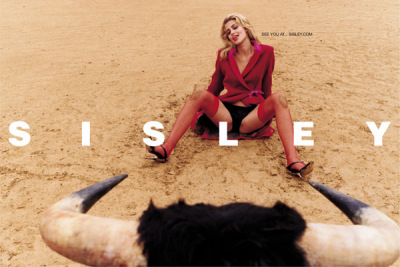
Sylvia

Their story leads to tragic twists of fate, ending in a number of suicdes beginning with Plath taking her own life at the age of 30 by placing her head in the oven with the gas turned on. There were cases of infidelity during their marriage on Hughes' part and Plath was left by him without divorce, for another woman by the name of Assia Wevill. Hughes later claimed the spouses never really considered divorce and that they were talking about reconciliation, only days prior to Plath's death.
Many of Plath's followers continiuously and aggresively blamed Hughes for her death. Only in his great poetic work, Birthday Letters, which was published 35 years after her death did Hughes actually address the issue of their relationship in his own words. Hughes eventually left Assia Wevill, who committed suicide (6 years after Plath's death) and murdered her 4-year old daughter by Hughes in the very same way Plath had died before her.
In March 2009, Hughes' and Plath's son Nicholas Hughes also ended his life with suicide at the age of 47.
Featured below is my very favourite poem by Plath.
April 18
the slime of all my yesterdays
rots in the hollow of my skull
and if my stomach would contract
because of some explicable phenomenon
such as pregnancy or constipation
I would not remember you
or that because of sleep
infrequent as a moon of greencheese
that because of food
nourishing as violet leaves
that because of these
and in a few fatal yards of grass
in a few spaces of sky and treetops
a future was lost yesterday
as easily and irretrievably
as a tennis ball at twilight.
(Note: The story of the relationship between Plath and Hughes was made into a film in 2003 starring Gwyneth Paltrow and Daniel Craig and is very recommended.)
Nina


Shaznay

Night swimming, beach walking
Always silent, never talking
Then you call my name
And I know inside I love you
Sail away, I miss you more
Until you see the shore
There I will be waiting
Anticipating
Each moment is new
Freeze the moment
Each moment is cool
Freeze the moment
I wouldn't wanna be
Anywhere else but here
I wouldn't wanna change
Anything at all (anything oh I)
I wouldn't wanna take
Everything out on you
Though I know I do (although I know I do)
Every time I fall
All Saints- Black coffee
Photo: From Julio Medem's gorgeous film Lovers of the Arctic Circle
Greta

Greta Garbo (formerly Gustafsson)
Speaking about stories it has to be Ingrid Bergman's words about her few meetings with Greta Garbo that are the most priceless. When Bergman left for the US, Garbo was already the number one silent film star who would eventually make the gruesome transition from silent films to sound films, only to become even more succesful than before with films like Camille and Ninotchka. Despite Bergman's trying to reach out to Garbo, the latter always kept her distance. Seemingly these two women were very different.
There was always myth around Garbo, only because she wanted it that way, even revelling in it and in many ways she was in control of her public persona. While her relationship with director Maurtiz Stiller (her mentor who notably directed her in the classic silent film adaptation of Selma Lagerlöf's Gösta Berlings saga) together with whom she left acting in Sweden for the US, is widely known, it has also been much talked about whether this Gretel preferred herself a Hansel or Hannie. At least some biographies will you have you believe Garbo spent parts of her life with female partners. Garbo was never a public figure and kept private. She experienced plenty of personal tragedy and loss and as a consequnce she had issues with trust and always feared losing what was hers.
Being clever enough to foresee that the end of WWII would surely see a change in the themes of films, changing to comedy and more up-beat stories, she withdrew from the business knowing she had to quit on top of her game (Garbo never saw herself as a comedienne). Despite popular beliefs, Garbo did not spend a very secluded life the first decades following her retirement and instead carried on a life in luxury, spending her time with royalties, socialites and very importants, though always off the public eye.
Here is an excerpt in Swedish about Garbo from Ingrid Bergman's biography:
"Hon var den vackraste kvinnan av alla och jag tycker alla hennes prestationer var enastående. Men Garbo ville aldrig träffa mig- hon kanske trodde att jag kommit dit för att tävla med henne. När jag förstod kom till Hollywood, sa Petter (Ingrid Bergmans första make, tandläkaren Petter Lindström) att jag som en liten gest borde skicka henne en blombukett, och det gjorde jag. Jag fick ett telegram tillbaka där det stod att hon skulle vilja träffa mig när jag var ledig. Hon bad om mitt telefonnummer. Jag var där i tre månader och jag skickade blommorna första veckan jag var där, men telegrammet kom bara några dagar innan jag skulle resa hem.
Jag minns att jag berättade detta för George Cukor vid ett senare tillfälle för George och Greta var mycket goda vänner. Jag sa att jag tyckte att det var tråkigt att vi aldrig hade träffats och att det varit så snällt av henne att skicka mig telegrammet men att det förstås hade varit sent. George skrattade och sa "Men Greta skulle förstås inte ha skickat telegrammet om hon inte vetat att du just skulle resa".
Jag såg också Greta när jag kom till Metros (Metro-Goldwyn-Mayer) för att spela in min fjärde film i Hollywood, Doktor Jekyll och Mr Hyde...Den första morgonen kom förstås både jag och Gabro ut ur våga loger precis klockan nio- vi var ju punktliga svenskor! Och så steg vi in i våra bilar, bara någon meter ifrån varandra. Men hon låtsades inte alls om mig och jag beslöt mig för att jag nog inte borde le och hälsa heller och insåg att hon nog besvärades av mig.
...
Många år senare var jag på en stor lunch på Barbados med min man Lars Schmidt, och in kom en grupp med Greta Garbo. Vad skulle jag nu göra? Skulle det bli ännu ett kyligt möte? Jag gick långt ner i den stora trädgården där folk satt och pratade. Lars och våra andra vänner talade med henne och hon måste ha frågat om jag var där, för jag såg att hon tittade åt mitt håll, och sedan kom hon också ner i trädgården och satte sig bredvid mig. Jag visste inte vad jag skulle säga, så nervös var jag. Men hon började tala och sa:
-Jag har hört att ni älskar Barbados och tänker köpa mark här ute?
- Ja, vi älskar den lilla stranden en bit härifrån och vi tänker bygga ett litet hus.
-Jaså, sa hon. Det skulle aldrig jag göra för de stjäl allting.
-Men det ska inte bli något luxuöst hus, bara en liten bungalow med rustika möbler, inte antikviteter eller något sådant, och vi ska bara använda den ett par månader på året och hyra ut den resten av året...
- Men de stjäl ens kläder.
-Kläder? Men allt man tar med sig till Barbados är ju baddräkt, ett par shorts och ett par långbyxor. Vill de ha dem får de gärna ta dem...
Hon sa ingenting utan reste sig upp och gick sin väg. Det var vårt sista möte. Kanske detta förklarar hennes attityd till livet: hon är rädd för att de ska ta allting från henne."
Liv

Liv Ullman
There are so many entertaining stories to tell from these readings, like for instance about Ingrid Bergman's rocky time as an acting student at the Dramatic Institute in Sweden during which she was cast for a part in a play by Alf Sjöberg in her very first year, to the disapproval of the senior students at school. At that time one generally had to complete the four first years to even be considered for the smallest of walk-on by ("Madame, your tea is served.") parts and there she was, bagging the great Alf Sjöberg at once. Apparently there was some serious bullying, mental as well as physical, going on against poor Ms Bergman to the extent that she was commanded by principal Molander to quit the play in order for peace. Wisely she said about youth, that one always bounces back up after set-backs.
Then there was also the story of Liv Ullman's regining years in Hollywood when she was once invited around for dinner with her daughter (writer Linn, daughter of Ingmar) at the house of a legendary blue-eyed film hero who turns out to be a complete douche bag by taunting Liv about her success and being rude to Linn's nanny. Being the bigger person his name is never disclosed by Ullman but it isn't hard to figure out it was most likely, Steve McQueen.

Claudia
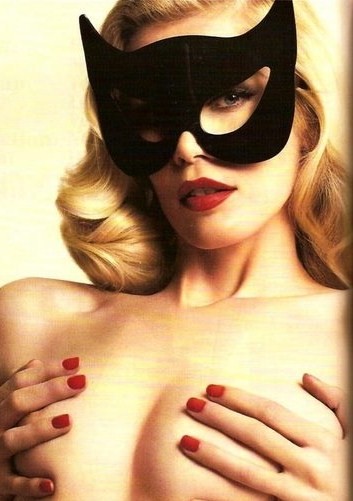
Honey, I'm home. Oh, I forgot. I'm not married.
Dogs supposedly give away their one life to live to owners like we hand out tissues, wheras cats always have another eight to fall back on. That being said, I'd rather be a cat than dog. Miau.
Photo: Mario Testino
Raoul

Raoul Dufy- Les Pêcheurs à l'ombrelle rouge devant Sainte-Adresse (1907)
Looking through French Fauvist painter Dufy's work is time well-spent and easily consumed. His sense of colour palettes is really something else at times. It's a pity; some of his fine work seem not to be particularly accessed on the World Wide Web.
Rupam
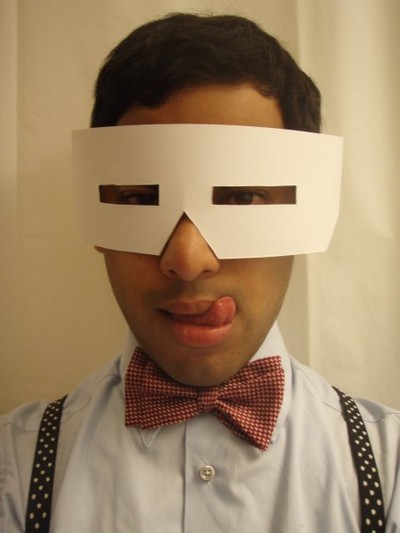
And who am I? That's one secret I'll never tell, you know you love me, xoxo, Goss...Oh fuck that, you know who I am (and while at it, fuck also the show I just shamelessly paraphrased) and If you happen not to know then that's really perfectly fine as well. No need. Although unlikely to start embodying all the characteristics of Martin Margiela starting now, I also do not intend to bore the other by disclosing my progress in bench pressing or the number of coffees I've had during the day that just passed or post pictures of the cute dog I don't own. Ah, you seem to have gotten the point already? OK then, full stop right about...here.
Jon

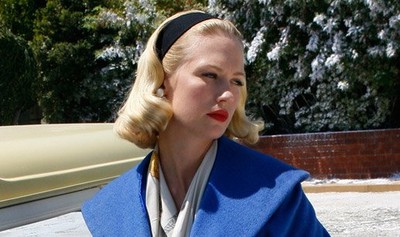
The blatant quality of a show like Mad Men makes going into words about it feel particularly redudant. So much to say and much of it has been said already. So what does make the cut? Subtleness. One of the aspects mastered by creator Matthew Weiner (formerly known as a writer for the Sopranos) is the subtleness of the show which is where a great deal of its strength lies. As frustrating as it may be at times, it's refreshing with no rushing whatsoever in terms of letting the drama play out as slowly as it does. One will be getting the feeling nothing much ever happens and yet it does. The use of silence in the ending scenes of episodes has an impact insofar that the storylines sometimes stays with the viewer long after the end. Every now and then the show brings thoughts to Wong Kar Wai's chef-d'oeuvre In the Mood For Love and that should say a lot.
Mr Dapper himself; Don Draper, as played meticulously by Jon Hamm, is by far the most charming and interesting protagonist on television since Agent Dale Cooper of David Lynch' Twin Peaks. With his Cary Grant and Clark Gable-ish sort of looks from an other era in time, one wonders where the world has had this guy in hiding for so long? Most certainly Hamm has fair potential of crossing over, doing a Clooney. Not mentioning January Jones' (Such lovely name it is too, does it not sound like the name of a Bond girl?) playing Mrs Don Draper (Betty), the repressed surburbian housewife would be an utter sin as she displays talent easily matching Hamm's. Her looking like a dead ringer for Grace Kelly just proves the effort that has been put down at the casting office as well as at other department's of the show in order to give the show it's authentic 60's feel. Detailing is everything and Mad Men just never seems to fail there.
Alain
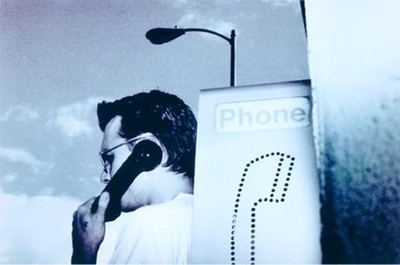
"Does beauty give birth to love or does love give birth to beauty? Did I love Chloe because she was beautiful or was she beautiful because I loved her? Surrounded by an infinite number of people, we may ask why our desire has chosen to settle on this particular face, this particular mouth or nose or ear, why this curve of the neck or dimple in the cheek has come to answer so precisely to our criterion of perfection? Every one of our lovers offers different solutions to the problem of beauty, and yet succeds in redefining our notions of attractiveness in a way that is as original and as idiosyncratic as the landscape of their face."
-Essays in Love
Photo: Anton Corbijn (from 33 Still Lives)
David
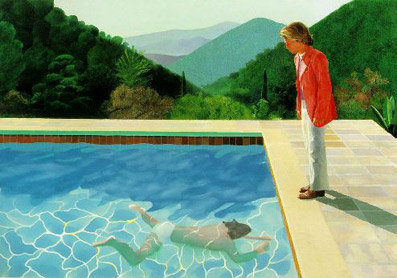
David Hockney
It's interesting. This painting by Hockney makes me strongly think about The Swimmer (1968), a modest classic starring Burt Lancaster which was based on a likewise titled short story by John Cheever, published in The New Yorker way back when, which some fourty years later served as inspiration for an editorial shoot helmed by photographer Steven Klein, ultimately proving that art imitates art.
Jean-Claude

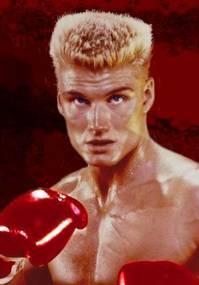
Remember us?
In a press release the other year Dolph Lundgren confided; "You know, I was thinking today, it would be great to make a movie with the '80s action Rat Pack -- Jean-Claude and a few others." Rat Pack? Rather bold usage of the term, I'd say, naturally thinking of Sammy Davis Jr, Frank Sinatra and Dean Martin. Treasured film critic Roger Ebert quipped: "I remember it more as the Rat Whack."
There are obviously action movies around but is the real action hero a dying breed? I can't think of many today, at least not of actors who are but who also lack the interest or ambitions of becoming more than just that. Anyone that comes to mind seems to be one by typecasting rather than by choice.
